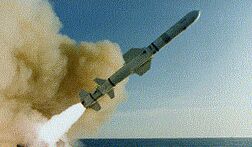
The History of Chemical Weapons - Part 2
The Cold War
At the end of World War II many Allied nations seized the chemical weapons. Most of the chemical weapons manufacturing plants in Germany were taken over and moved by Russia to a new site in Volgograd. This "take-over" prompted other nations to begin even more research on chemical weapons that even was initially expected.
During 1952 in the United Kingdom, during research on perspective
chemical agents being developed from insecticides, a chemical agent which was
many times greater in lethal properties than any other known chemical agent at
the time was discovered. Soon after the United Kingdom had discovered this new
agent, the United States took over the large-scale production of what had been
codename VX. The manufacturing of VX began in the United States in 1961.
It was also during the 1980's that several accounts of the use of chemical warfare agents. In 1982, the U.S. claimed that Laos and Vietnam used chemical and biological weapons in Laos and in Cambodia. The U.S. also said that Soviet forces used chemical weapons, including nerve gas, during their invasion of Afghanistan.
This image was copied from www.lcark/edu without permission
Iran and Iraq
Iraq attacked Iran in 1980. It unleashed chemical weapons including a mustard agent and the nerve agent tabun, delivered in bombs dropped by airplanes. An estimated 5% of Iranian casualties were due to the use of chemical weapons. Soon after the war ended in 1988, Iraq appears to have used chemical weapons in attacks on Kurdish civilians.
Also it was alleged that Libya used chemical weapons, obtained from Iran, in attacks on neighboring Chad. In 1991, the Gulf War started and there is no evidence that Iraq used its chemical weapons. The commander of the Allied Forces, Gen. H. Norman Schwarzkopf, suggested this may have been due to Iraqi fear of retaliation with nuclear weapons.